Refill pouches have been integrated into many home and personal care products recently as one of the sustainable packaging solutions. Even though there are various ways to reduce environmental impacts, such as packaging with post-consumer recycled (PCR) content and biodegradable material, a refill pouch is one of the fastest ways to improve packaging sustainability. Here are some facts about refill pouches.
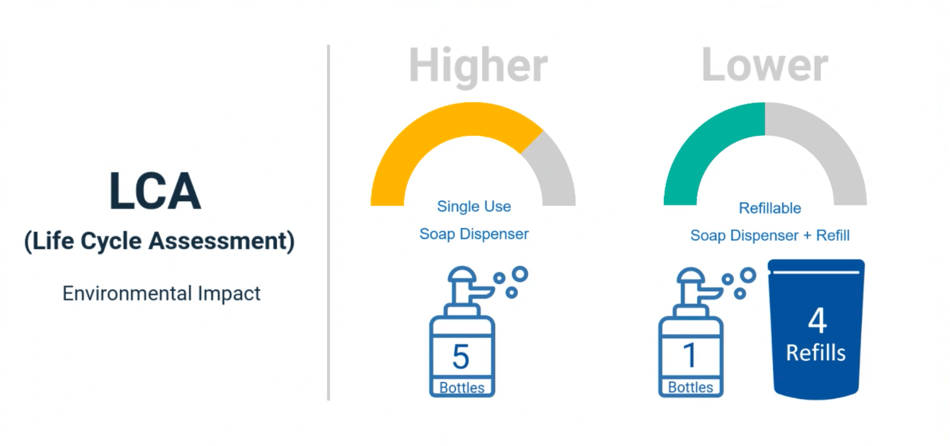
Life Cycle Assessment
Life Cycle Assessment (LCA) is a tool to measure a package’s impact on the environment throughout its lifetime, from raw material to end of life. According to the results from COMPASS, one refillable dispenser and one refill pouch, which can refill four times, have a lower overall LCA, including water use and fossil fuel use, compared to five single-use dispensers.
Greenhouse Gas (GHG) emissions
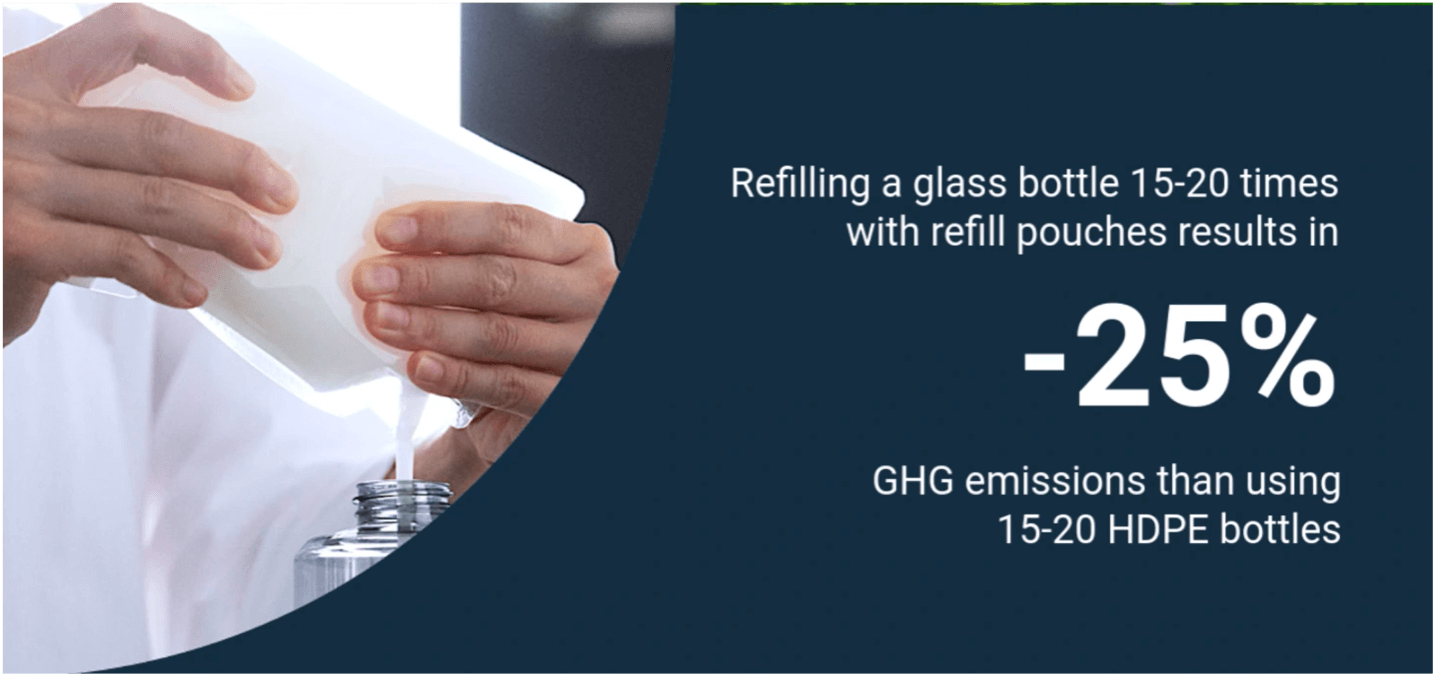
According to McKinsey research, the reuse and refill model has a lower impact on Greenhouse Gas (GHG) emissions. The study compared refilling a glass bottle with refill pouches 15-20 times, resulting in approximately 25% lower GHG emissions than using 15-20 HDPE bottles. Now let’s look at the impact we can make by switching to refill pouches for everyday products.
Resource:
- What is a refill pouch? Everything you need to know, from the materials to the benefits of refill pouches.
- MONOSOLUTIONS™ Vol. 2 – Stand-up pouch, sustainable liquid pouch
- Refill Pouch Market Success Story
Scenario One: Laundry Detergent Jug
It is said that over 700 million jugs of laundry detergent are consumed each year in the United States. A typical 92 Fl oz jug weighs about 200g. That is 140k tons of plastic just for this application. If we switch half to refill pouches, a reduction is equivalent to removing 263 million plastic jugs of laundry detergent each year.
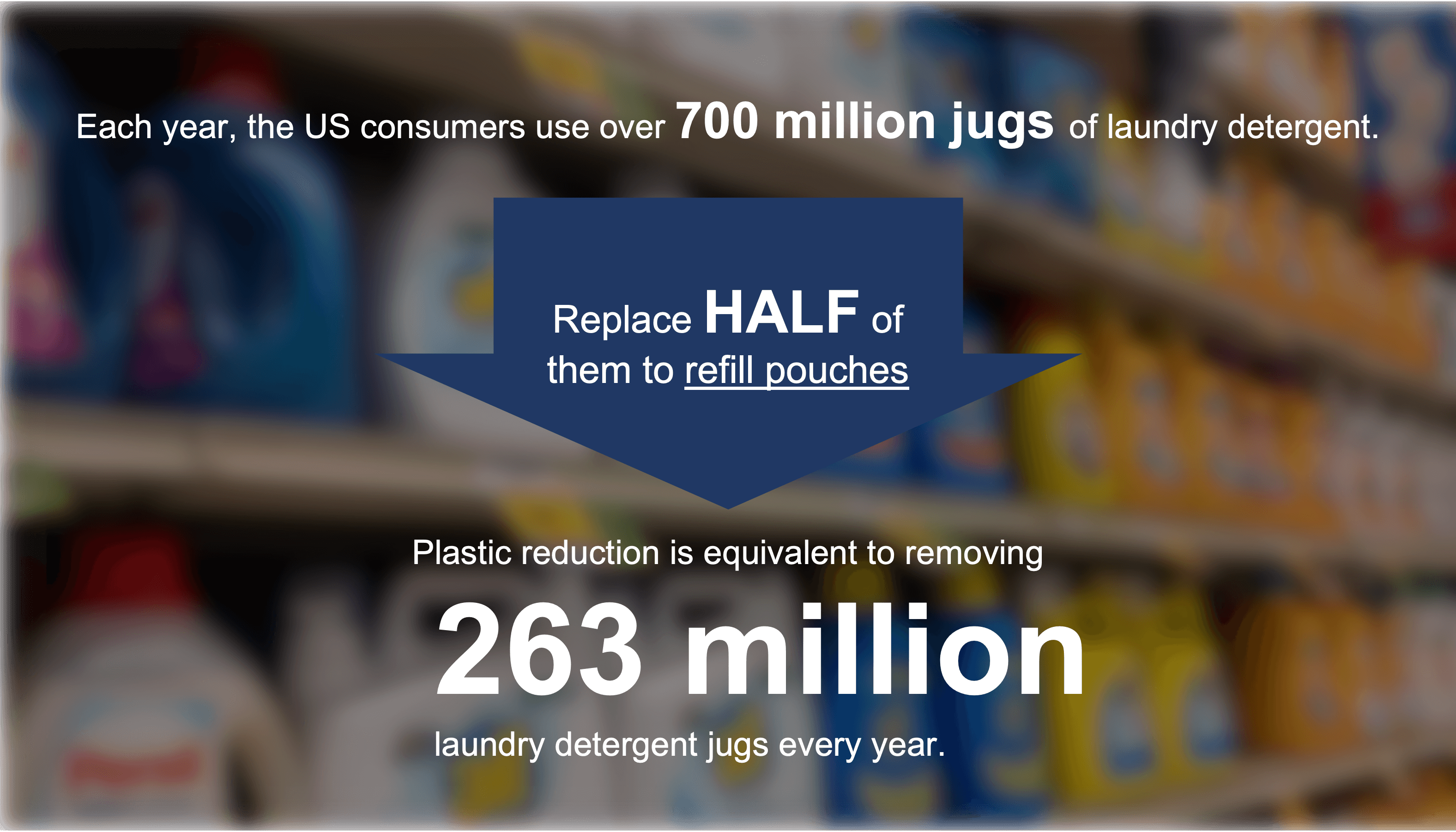
Scenario Two: Shampoo bottle
In 2020, 409 million regular shampoos were sold in the United States. If we switch half to refill pouches, a reduction is equivalent to removing 143 million shampoo bottles yearly.
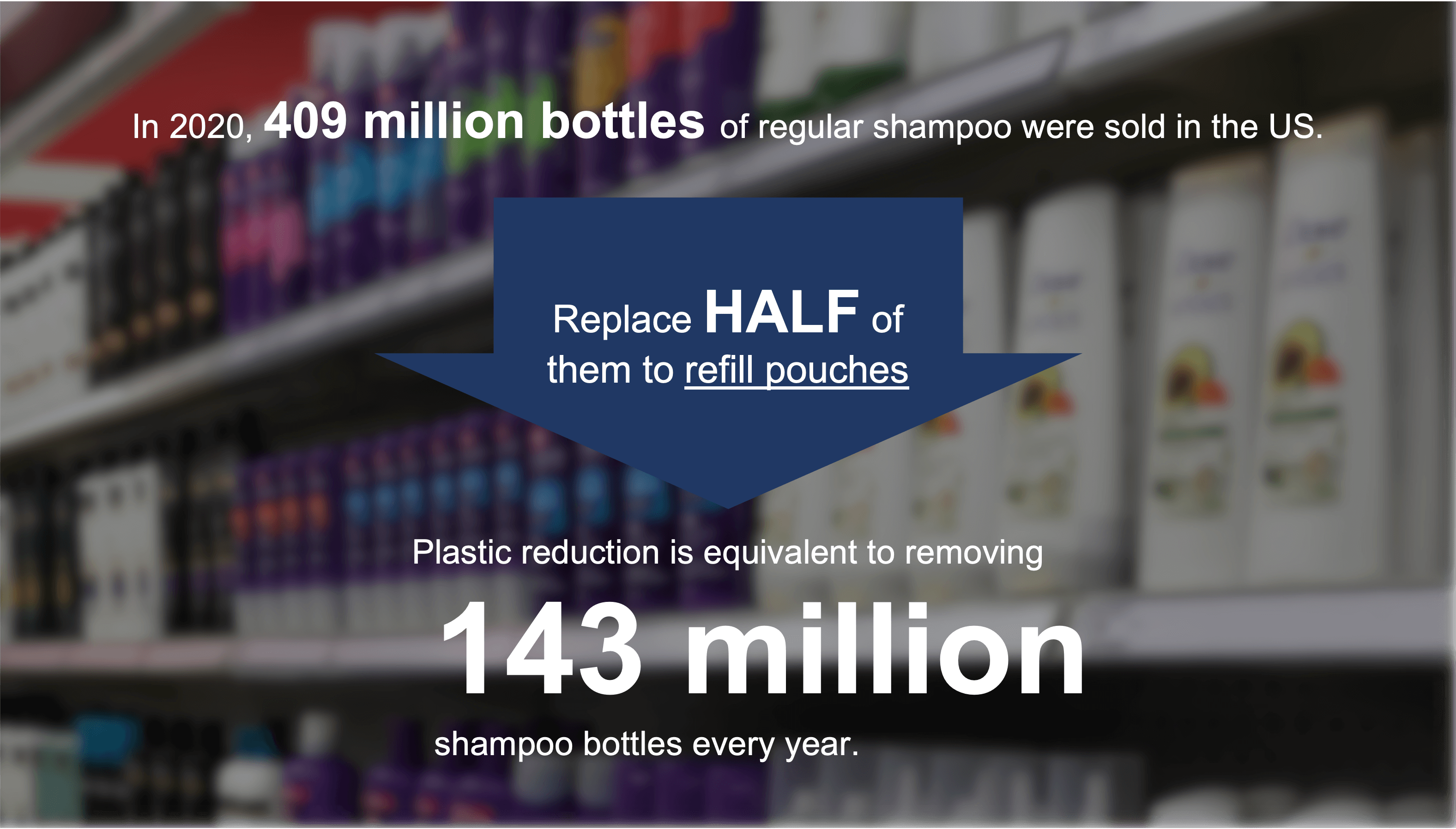
Scenario Three: Dish Detergent bottle
The data shows that unit sales of dish detergent category were approximately 625 million units. If 1/3 of the 625 million units were liquid dish detergent, 21k tons of plastic are consumed every year. If we switch half of them to refill pouches, reduction is equivalent to removing 73 million bottles each year.
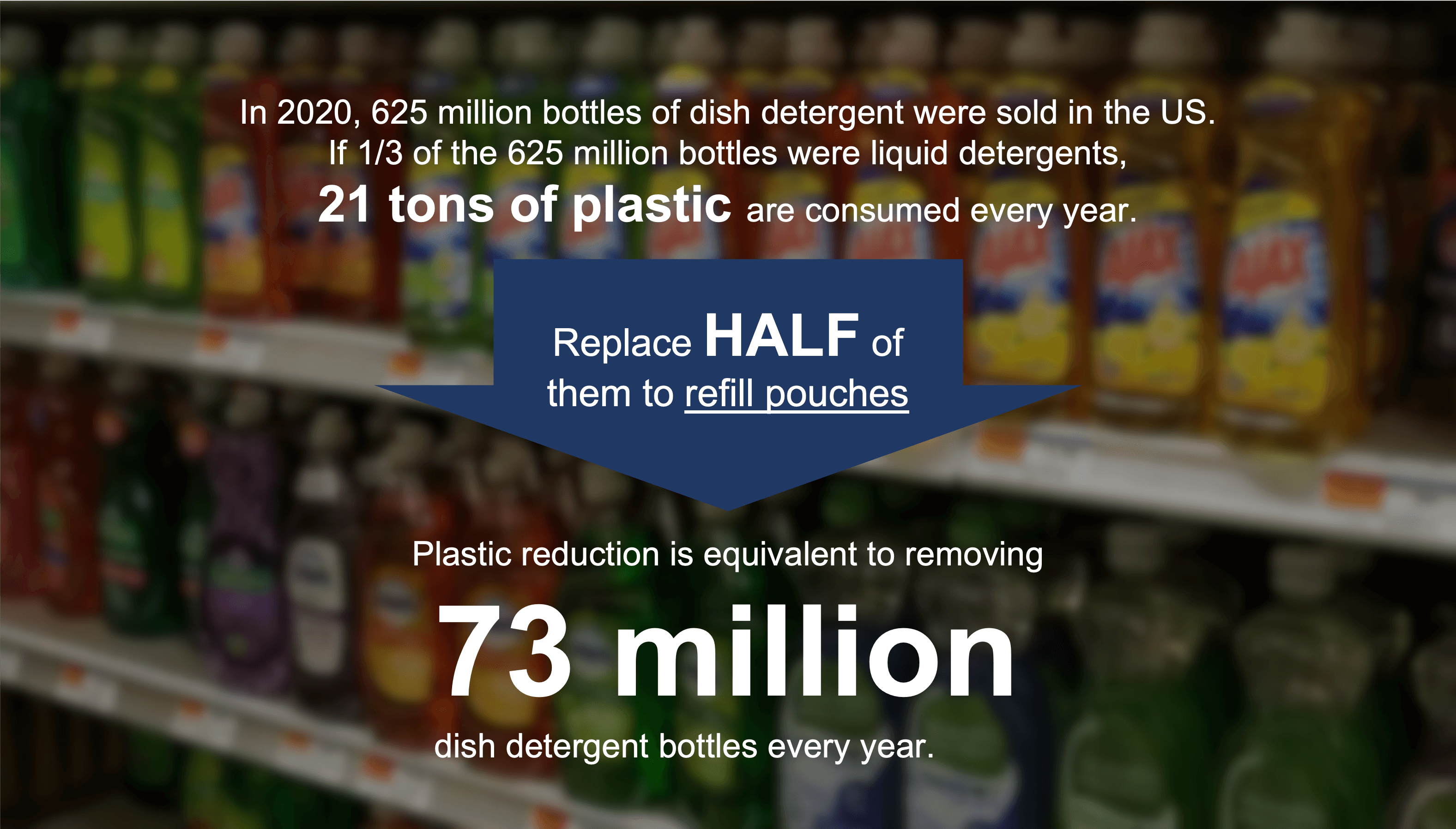
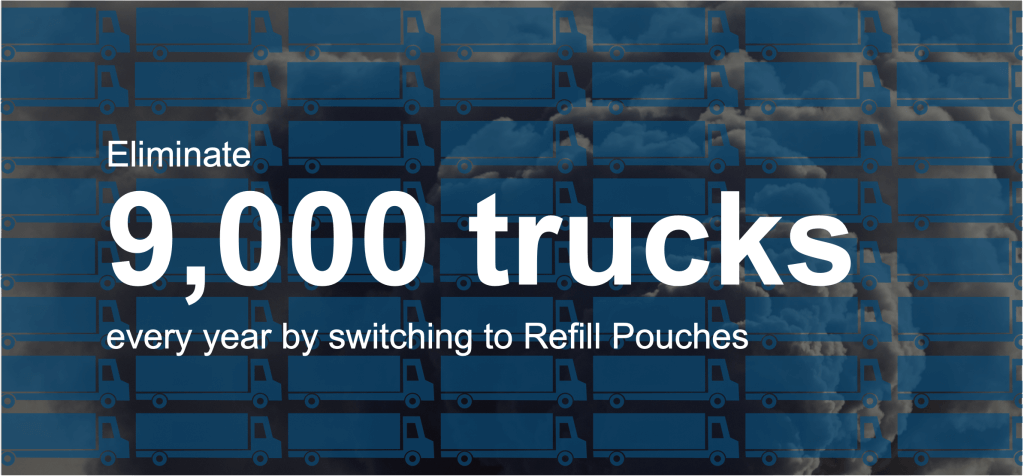 Reduction of plastic consumption is not the only impact that refill pouches offer. All the transportation we can eliminate by switching to refill pouches is substantial. If we change half of laundry detergent jugs, shampoo bottles, and dish detergent bottles in the US to refill pouches, we could potentially eliminate over 9k trucks every year, resulting in a significant reduction of the carbon footprint from transportation. Refill pouches are already adopted in many countries. And their results prove that refill pouches help improve packaging sustainability drastically; even pouches are not recyclable.
Reduction of plastic consumption is not the only impact that refill pouches offer. All the transportation we can eliminate by switching to refill pouches is substantial. If we change half of laundry detergent jugs, shampoo bottles, and dish detergent bottles in the US to refill pouches, we could potentially eliminate over 9k trucks every year, resulting in a significant reduction of the carbon footprint from transportation. Refill pouches are already adopted in many countries. And their results prove that refill pouches help improve packaging sustainability drastically; even pouches are not recyclable.
Are you interested in refill pouches? ZACROS has been manufacturing refill pouches for home and personal care products for over 25 years. ZACROS provides a wide range of refill pouches, from a spoutless laminated pouch to a monomaterial spout pouch. We assist from material selections and designs to filling assist. Contact us today to learn more about sustainable refill pouch options.
References
McKinsey. Climate Impact of Plastics, July 2022.
Statista. Shampoo Unit Sales in the United States in 2021, by Category.
Statista. Dish Detergent Unit Sales in the United States in 2020, by Product Type.
Trayak and COMPASS Analysis. LCA is a Consumer and Location Dependent.
Assumption
Laundry detergent jug 92 Fl oz = 200g
Laundry detergent refill pouch 92 Fl oz = 50g
Dish detergent and Shampoo bottle 25 Fl oz = 100g
Dish detergent and Shampoo refill pouch 25 Fl oz = 30g
53-foot trailer can hold 52,416 12oz bottles